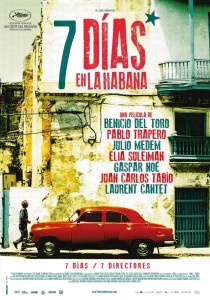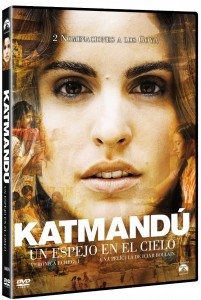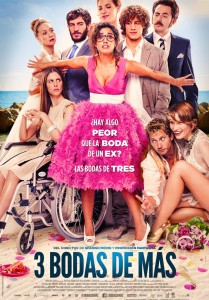Our library has new opening times
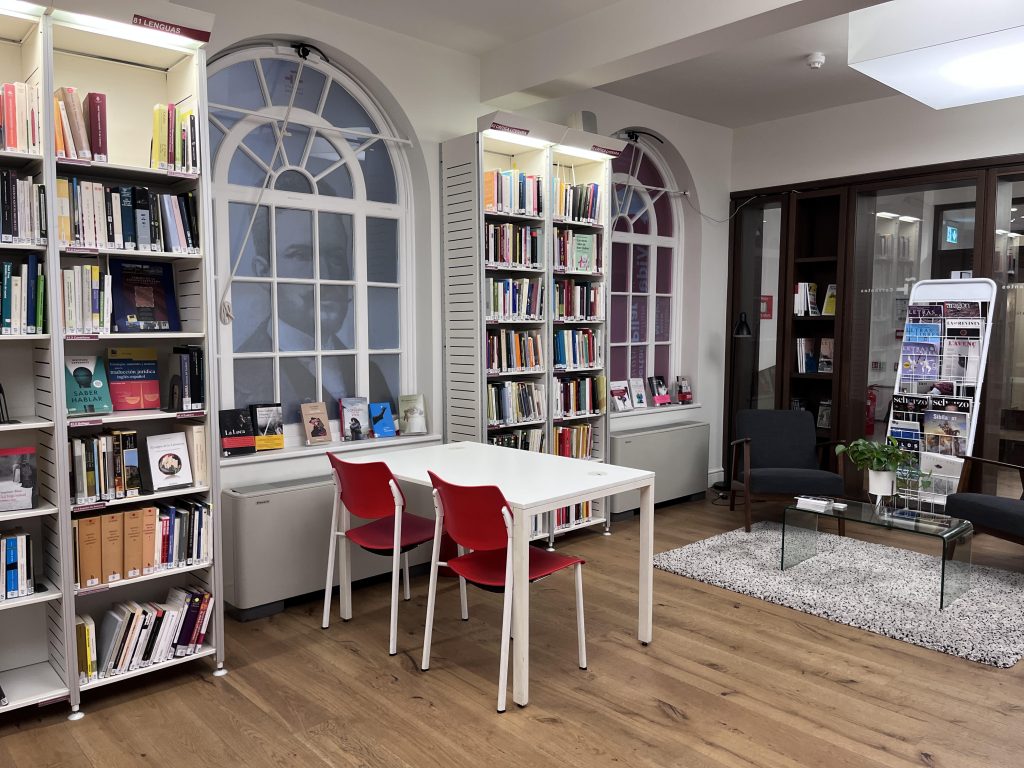
Tuesday to Thursday: 11am to 6:30pm
Friday: 11am to 5:30pm
Saturday: 9:30am to 3pm
More information here
The curious look of English women travellers on Spain
Written by Marta Jiménez Miranda (University of Córdoba) (Research Group HUM-887)
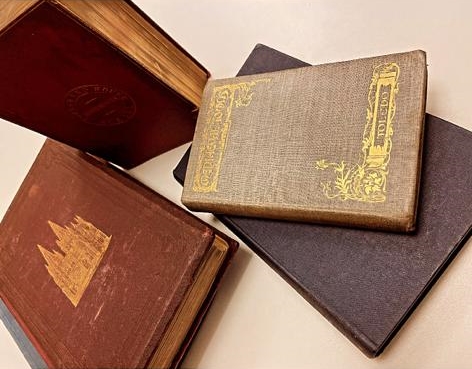
The main reason for travelling before the eighteenth century was the discovery of scientific, economic and cultural innovations in those destinations more advanced than the traveller’s own country. This phenomenon was known as the British Grand Tour (an itinerary throughout Europe, which used to include France, Germany, Switzerland, and Italy). The travels of the Grand Tour reached their highest peak in the 18th century and in the 1820s, thanks to the arrival of the railway, and the objective of these travels was far from what Spain was offering to travellers. Nonetheless, nostalgia for the bygone times caught English romantics’ attention. The aim of travelling to Spain was not only to meet their beloved past, but also to break with all those preconceived ideas that were held about Spain in the rest of Europe. In fact, the Italian writer Giuseppe Baretti mentioned it in his book A Journey from London to Genoa through England, Portugal, Spain, and France (1770), where he stated that if the Spanish “do less than the English, the Dutch or any other modern nation, it is not for any reason except that they have less to do”. Hence, it is this type of objective statements and the reforms and constructions carried out by King Carlos III of Spain that began to satisfy European travellers’ needs, encouraging them to visit Spain.
The Port of Cádiz would facilitate the connection of English travellers with Madrid. This route was also very popular among merchants and soldiers. Thus, cities such as Córdoba, Seville and Cádiz would be a good place to rest while reaching the port. Travellers felt captivated by Andalusian cities, not only because they were still stuck in the past, but they also found classical archaeology, picturesque customs, and attractive festivities.
Everything they saw contrasted with the literature they had previously read outside of Spain, and consequently they managed to break with the Spanish clichés written up until then. Therefore, we can consider we are in a turning point in Spanish travel literature, since all those texts which contained harmful criticism and inaccurate information made way to more objective texts whose intention was to make our culture known around the world.
The real Hispanophiles emerged during the first half of the 19th century thanks to fine arts. Spain was becoming an irresistible destination for romantic travellers, including Richard Ford, hispanist and drawer, who travelled to Spain with the intention of not only moving through space, but also through time.
The interest in travelling to exotic places arises due to the Romantic movement, so does the interest in Spanish dances and festivities. In addition to the foregoing, the Mediterranean climate and its famous therapeutic value encouraged many Brits to travel to Spain, more specifically to Andalusia. Well-known personalities like George Eliot and Annie J. Harvey travelled from England to Spain in order to improve their health. Annie J. Harvey said that the southern places were the best to stop the development of her chronic disease.

We did not only receive visits from travellers who looked for their treatment in our weather conditions, some other were interested in illustrious characters, as was the case of Matilda Betham-Edwards, who visited Spain in 1867 to study Velázquez, and for this reason she spent a long time in Andalusia. This same scenario happened to Marguerite Purvis, who visited Spain in 1869 attracted by the Andalusian pictorial collections.

Many experts on the matter have elaborated lists of the English travellers who visited Spain. However, there are no studies trying to make a compilation of the women British travellers who dedicated some of their trips to visit Spain. While working on these English ladies’ work, what also caught our attention was that the female view towards our country was quite different from that of male travellers. The main difference is that men tend to show an increasingly stereotyped image of our land, while women offer a much more inquisitive look, questioning clichés and misinformation about Andalusia.
Thanks to the Reina Sofía Library of the Instituto Cervantes in London it is possible to reencounter with our male and female travellers’ stories and points of view. Among the extensive collection of original books by female travellers, it is worth highlighting:

Mary Elizabeth Herbert was a translator, writer, and philanthropist. She described everything she saw in Spain in her book Impressions of Spain in 1866.
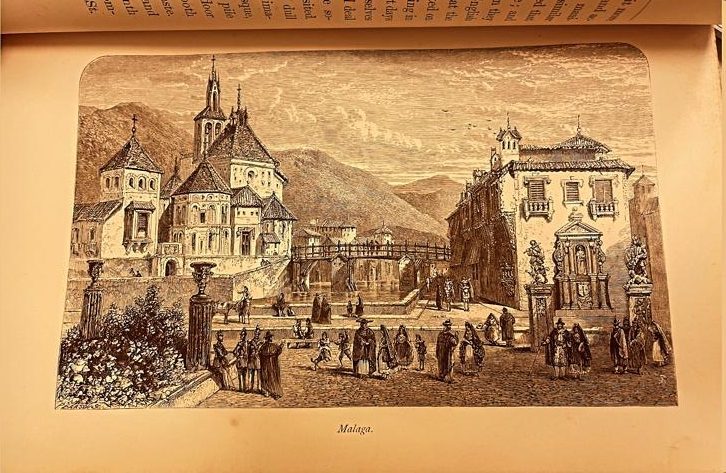
Mrs. Wm. Pitt Byrne talks about the customs, culture and infrastructure of Spain in her book Cosas de España (1866).

Hannah Lynch worked as a co-editor in a local newspaper when she finished school. She developed her career as a writer and died in Paris in 1904. In her book Toledo: the story of an old Spanish Capital, published a year before her death (1903), she recounts her adventures through the city of Toledo.

Madelaine Duke, although she used her own name to sign her works, she also signed with various male pseudonyms such as Maxim Donne and Alex Duncan. In her work Beyond the Pillars of Hercules: A Spanish Journey, published in 1957, she relates the experience of her trip to Spain, especially Andalusia and Madrid.

La curiosa mirada de la viajera inglesa sobre España
Escrito por Marta Jiménez Miranda (Universidad de Córdoba) (Grupo de investigación HUM-887)

El principal motivo de los viajes antes del siglo XVIII era el descubrimiento de novedades científicas, económicas y culturales en aquellos destinos más avanzados que el propio país del viajante. Dicho fenómeno es conocido como el Grand Tour británico (itinerario de viaje por Europa, que solía incluir Francia, Alemania, Suiza e Italia). Su máximo auge tuvo lugar en el siglo XVIII y en la década de 1820, gracias a la llegada del ferrocarril, y el objetivo se alejaba de lo que ofrecían los viajes a España. A pesar de ello, la nostalgia de épocas pasadas atrae a los ingleses románticos. Estos viajeros no solo nos visitan en busca de ese pasado que tanto ansían, sino que existe por parte de estos nuevos visitantes un afán por desmentir todas las ideas preconcebidas que se tenían de España en el resto del mundo.
De hecho, Giuseppe Baretti hacía mención de ello en su obra A Journey from London to Genoa through England, Portugal, Spain, and France (1770), donde afirmaba que, si los españoles «hacen menos que los ingleses, los holandeses o cualquier nación moderna, no es por ninguna razón salvo que tienen menos que hacer». Y son este tipo de afirmaciones y las reformas que lleva a cabo el rey Carlos III las que empezaron a satisfacer las exigencias de los viajeros europeos, animándolos de este modo a visitar España.
El puerto de Cádiz facilitaría el tránsito de viajeros ingleses comunicándolos con Madrid, ruta muy concurrida también por comerciantes y militares. Así, ciudades como Córdoba, Sevilla y Cádiz serían un punto de descanso para poder llegar hasta los puertos de América. Estas tierras les atraían especialmente por estar ancladas en el pasado y ser contenedoras de arqueología clásica, gentes de costumbres pintorescas y atractivas festividades. Todo lo que veían contrastaba con la literatura que habían leído previamente fuera de España, lo que conseguía romper con todos (o casi todos) los tópicos sobre España.
Por tanto, podemos considerar que, en este punto, la literatura de viajes relacionada con nuestro país experimenta un significativo cambio, ya que todos esos textos que contenían críticas burlescas y dañinas para la visión que se tenía de España dan paso a textos más objetivos y que, simplemente, pretenden dar a conocer nuestra cultura de un modo más justo. El verdadero boom de hispanofilia tiene lugar durante la primera mitad del siglo XIX gracias al mundo de las artes. España empieza a ser un destino irresistible para el viajero romántico, entre ellos Richard Ford, hispanista y dibujante, que se desplazó a España, con la intención no solo de desplazarse en el espacio, sino también en el tiempo.
Con el movimiento romántico surge el interés por viajar a lugares exóticos y las fiestas y los bailes se convierten en un gran atractivo. Además de todo lo mencionado, el clima mediterráneo y su afamado valor terapéutico animó a gran cantidad de británicos a viajar hasta España, y más concretamente hasta Andalucía. Viajeras como George Eliot o Annie J. Harvey se trasladaron desde Inglaterra para mejorar su salud; por ejemplo, Annie J. Harvey cuenta que los lugares meridionales son los mejores para frenar el desarrollo su enfermedad crónica.

No solo nos visitan viajeros buscando curación por nuestras condiciones atmosféricas, también lo hacen interesados en personajes ilustres, como es el caso de Matilda Betham-Edwards, que visita España en 1867 para estudiar a Velázquez y con esta excusa pasa una larga temporada en Andalucía. Ocurre lo mismo con el caso de Marguerite Purvis que nos visita en 1869 atraída por las colecciones pictóricas andaluzas.

Muchos estudiosos realizaron listados más o menos elaborados de los ingleses que visitaron España. Sin embargo, no existen estudios que traten de hacer una recopilación de las viajeras británicas que nos dedicaron alguno de sus viajes. Esto resulta curioso, ya que la mirada de la viajera británica hacia nuestro país era diferente a la de los viajeros masculinos. La principal diferencia radica en que los viajeros suelen mostrar una imagen siempre más estereotipada de nuestra tierra, en tanto que las mujeres ofrecen una mirada mucho más inquisitiva, cuestionando tópicos e informaciones erróneas sobre Andalucía. La biblioteca Reina Sofía del Instituto Cervantes de Londres hace posible el reencuentro con las historias y el punto de vista de nuestras viajeras. En la amplia colección de obras originales de viajeras merece la pena destacar a las siguientes autoras:

Mary Elizabeth Herbert era traductora, escritora y filántropa. Describía todo lo que iba viendo por España en su obra Impressions of Spain in 1866.

Mrs. Wm. Pitt Byrne habla sobre las costumbres, la cultura e infraestructuras de España en su obra Cosas de España (1866).

Hannah Lynch trabajó como coeditora en un periódico local cuando terminó el colegio, se dedicó a la escritura y murió en París en 1904. En su obra Toledo: the story of an old Spanish Capital, publicada un año antes de su muerte (1903), relata sus aventuras por la ciudad de Toledo.

Madelaine Duke, además de trabajar con su propio nombre, también utilizó varios pseudónimos masculinos como Maxim Donne y Alex Duncan. En su obra Beyond the pillars of Hercules: a Spanish journey, publicada en 1957, relata la experiencia de su viaje a España, sobre todo por Andalucía y Madrid.

In the mood for reading? Don’t miss our e-book platform!
Our library is here to support you during these difficult times. Discover our e-book platform: e-books, audiobooks and videos. Search, find, download or stream the latest novels from the most important Spanish and Latin American authors, our easy readers, grammar books, children books, audiobooks and videos.
How?
1.- Access to the Platform (via Web or App).
2.- Sign in with your library card number and password. If you don’t have a valid library card, please, contact us: biblon@cervantes.es
3.- If you want to use a PC (Windows or Mac) you will need to install Adobe Digital Editions to download the books
4.- If you want to use our e-library from your mobile or tablet, please download our app ‘ Libros-e Instituto Cervantes’ and access your Library account.
The app is available in AppStore from iOS, Google Play from Android and in Windows Phone from Microsoft.
You can use our e-library 24/7 whenever you want wherever you are if you have Internet connection
If you need further assistance, we are here to help. You can contact us: biblon@cervantes.es
And… don’t forget… You can also join our Book Club and our Conversation Club every month
Libros para niños de 6 a 8 años (I) – Books for children from 6 to 8 years (I)
After having started school at 4, most children yearn to read on their own by the ages of 6 or 7. For this special time, we suggest a range of different books from our library:
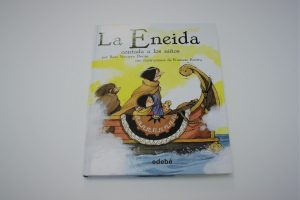
La Eneida Contada A Los Niños de la autora Rosa Navarro Duran y el ilustrador Francesc Rovira. La Eneida es un relato de aventuras, de amores y de guerras. Leyendo La Eneida podremos conmovernos con el dolor de la bellísima reina Dido cuando Eneas se marcha, sufrir por la suerte de las naves del troyano en medio de las tempestades, o asistir a su impresionante combate con el rey Turno. Veremos a Iris, dibujando su arco en el cielo cuando Juno la envía con sus mensajes perversos, porque fue esta poderosa diosa la gran enemiga de Eneas.
The Aeneid, as retold for Children by author Rosa Navarro Durán and illustrator Francesc Rovira. The Aeneid is a tale of adventures, love and war. Reading the Aeneid, we will be moved by the pain of the beautiful queen Dido when Aeneas departs, to suffer the fate of the Trojan vessels in the thick of the tempests, or to attend his incredible combat with king Turnus. We will see Iris, drawing her bow in the sky when Junus sends her his hateful messages, because this powerful goddess was Aeneas’ great enemy.
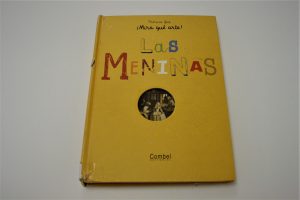
¡Mira que arte! Las Meninas (¡Mira qué arte!) de la autora e ilustradora Patricia Geis Conti. Es una colección de libros que combinan historia del arte con imágenes, espectaculares pop-ups y actividades divertidas para descubrir las obras más célebres de todos los tiempos. Después de La Mona Lisa, ponen al alcance de los pequeños uno de los cuadros más enigmáticos de la historia del arte: Las Meninas, de Velázquez.
Las Meninas by author and illustrator Patricia Geis Conti. It is a collection of books that combine art history with images, spectacular pop-ups and fun activities to discover the most famous works of all time. Our particular favourite comes after the Mona Lisa, and is one of the most enigmatic paintings in art history within reach of the little ones: Las Meninas, by Velázquez.
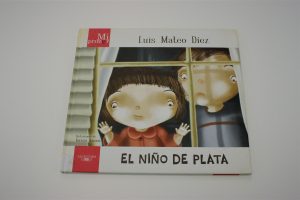
Mi Primer Luis Mateo Díez. El niño de plata. En la colección de literatura infantil «Mi primer» los grandes de la literatura se enfrentan al público más exigente… ¡los pequeños lectores!
My First by Luis Mateo Díez. The silver kid. In the collection of children’s literature called «My first» the greats of literature face the most demanding public … small readers!
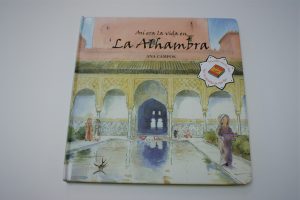
Así era la vida en la Alhambra de la autora Ana Campos. La Alhambra es una ciudad árabe medieval que ha llegado increíblemente bien conservada a nuestros días. Este libro ayudará a comprender cómo era la vida en la Alhambra en el siglo XIV. Descubre como era el interior de las torres o los cuartos de baño. Sumérgete en una cultura antigua que nos ha dejado un legado único.
That was life in the Alhambra by author Ana Campos. The Alhambra is a medieval Arab city that is still incredibly well preserved today. This book will help children to understand what life was like in the Alhambra in the fourteenth century. Discover what the interiors of the towers or even the bathrooms were like… Immerse yourself in an ancient culture that has left us a unique legacy.


El libro de Gloria Fuertes para niñas y niños de Gloria Fuertes, con el escritor Jorge Cascante y la ilustradora Marta Altés. Esta edición única profusamente ilustrada por Marta Altés, nuestra ilustradora de mayor proyección internacional, incluye: – Un prologo escrito por Gloria Fuertes a mediados de los 80 para una antología que jamás se publicó. – Cartas de las niñas y niños que Gloria recibió a lo largo de los años en su buzón. – Una carta abierta a todos los maestros firmada por la poeta. – Una selección de algunos de los poemas escritos por las niñas y niños que participaron en el Premio de Poesía Infantil Gloria Fuertes a lo largo de todas sus ediciones.
The Book of Gloria Fuertes for girls and boys by Gloria Fuertes, plus writer Jorge Cascante and illustrator Marta Altés. This unique edition, bountifully illustrated by Marta Altés, our illustrator with the greatest international projection, includes: – A foreword written by Gloria Fuertes in the mid-80s for an anthology that was never published. – Letters from the girls and boys Gloria received over the years in her mailbox. – An open letter to all teachers signed by the poet. – A selection of some of the poems written by the girls and boys who participated in the Gloria Fuertes Children’s Poetry Prize throughout all its editions.
Nuevas películas en español disponibles en nuestra biblioteca / New movies in Spanish arrived in our library
Se acerca agosto y, en breve, el horario de biblioteca podría verse afectado. Sin embargo, la plataforma de préstamo de materiales-e seguirá activa 24 horas al día, 7 días a la semana, y el tiempo de préstamo de materiales físicos no se reducirá a lo largo de todo el mes.
Si decides matricularte en uno de los últimos cursos intensivos de español de este verano, o en uno de los que acaban de comenzar y duran hasta finales de septiembre, tenemos buenas noticias; acabamos de recibir muchísimas películas españolas en DVD, no disponibles en ningún otro formato, con las que disfrutarás muchísimo, practicarás tu comprensión oral y descubrirás nuevos acentos, expresiones y culturas con las que enriquecer tu español.
Abajo tienes una muestra, pero puedes consultar todo el nuevo material que hemos incorporado a la biblioteca en el tablero «Novedades Biblioteca» en nuestra cuenta en Pinterest. Si te gusta lo que ves, podemos proponerte un plan intensivo de películas en español en agosto.
Horario de apertura de biblioteca:
Lunes – cerrado
Martes y miércoles 12:30 – 19:00
Jueves 12:30 – 18:30
Viernes 12:30 – 18:00
Sábado 9:30 – 14:00
Dirección:
102 Eaton Square, London SW1W 9AN
Contacto para consultas:
Teléfono: 020 7201 0757
Mayte Azorín (Directora): biblon@cervantes.es
María Santurde (Asistente Administrativa): biblon1@cervantes.es
_____________________________________________
August is around the corner, and our library opening times could be affected shortly. Regardless, our e-lending service will keep open 24 hours a day, 7 days a week, and the lending period of all physical materials will not be shortened during this time either.
If you decide to enrol in either one of the last intensive courses available this summer, or one of the ones that just started and last until late September, we have some good news; we just received a whole lot of Spanish movies in DVD, at present unavailable in any other format. You will get to laugh/cry along, brush up on your listening skills and hear new accents, expressions and cultures that will contribute to enriching all aspects of your Spanish.
Below is a taster, but you can browse through all our newly received material on the board New Titles Just In on our Pinterest profile. If you like what you see, we can help you put together a Spanish cinema binge-watching plan throughout August.
Library opening times:
Monday – Closed
Tuesday – Wednesday 12:30 – 19:00
Thursday 12:30 – 18:30
Friday 12:30 – 18:00
Saturday 9:30 – 14:00
Address:
102 Eaton Square -London SW1W 9AN
Contact for library-related enquiries:
Telephone: 020 7201 0757
Mayte Azorín (Head Librarian), biblon@cervantes.es
María Santurde (Administrative Assistant), biblon1@cervantes.es
Selección bibliográfica sobre El Camino de Santiago | Bibliographic selection about the Way of Saint James’
Con motivo de la conferencia que impartirá hoy en nuestro Instituto el profesor Manuel Rodríguez Camino de Santiago: el viaje sin fin, la biblitoeca ha preparado una selección de libros, guías de viaje, revistas, DVD’s e invcluso lecturas graduadas, para que las personas que estén interesadas en el tema, puedan consultarlas en la biblioteca o/y llevárselas prestadas. ¡Esperamos que les gusten!
Camino de Santiago: el viaje sin fin
JUE 28/02 – 6.30pm
Auditorio del Instituto Cervantes Londres
by Manuel Rodríguez
In the occasion of the talk that Professor Manuel Rodríguez will give here about the Way of Saint James’, the library has made a selection of books, tour guides, magazines, DVD’s, comics, and even easy readers for our students to browse or to borrow. We hope you will enjoy them!
The way of Saint James: the endless journey
THU 28/02 – 6.30pm
Auditorium Instituto Cervantes Londres
Encyclopaedia Britannica Online Academic Edition
 Importante recursos que ofrece acceso a más de 73,000 entradas. Además se pueden comparar datos estadísticos de todos los países, buscar citas de autores conocidos y leer los textos de los grandes pensadores y filósofos.
Importante recursos que ofrece acceso a más de 73,000 entradas. Además se pueden comparar datos estadísticos de todos los países, buscar citas de autores conocidos y leer los textos de los grandes pensadores y filósofos.
Encyclopædia Britannica Online Academic Edition gives you access over 73,000 articles. Also offers additional content sources: compare statistics for all countries in World Data Analyst, browse phrases from famous authors in Notable Quotations, or peruse essays from great thinkers in Gateway to the Classics.







